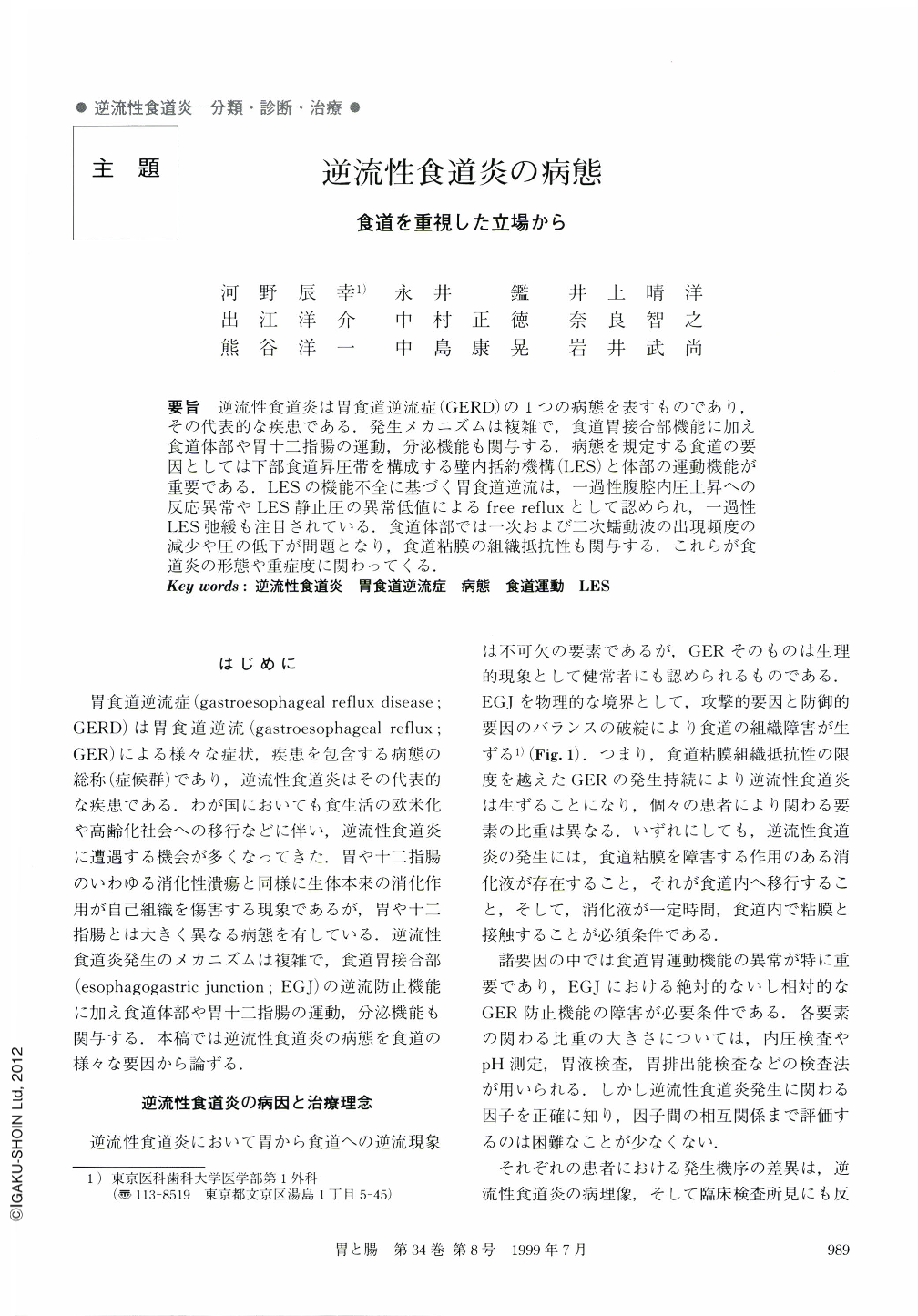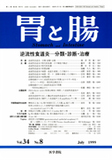Japanese
English
- 有料閲覧
- Abstract 文献概要
- 1ページ目 Look Inside
要旨 逆流性食道炎は胃食道逆流症(GERD)の1つの病態を表すものであり,その代表的な疾患である.発生メカニズムは複雑で,食道胃接合部機能に加え食道体部や胃十二指腸の運動,分泌機能も関与する.病態を規定する食道の要因としては下部食道昇圧帯を構成する壁内括約機構(LES)と体部の運動機能が重要である.LESの機能不全に基づく胃食道逆流は,一過性腹腔内圧上昇への反応異常やLES静止圧の異常低値によるfree refluxとして認められ,一過性LES弛緩も注目されている.食道体部では一次および二次蠕動波の出現頻度の減少や圧の低下が問題となり,食道粘膜の組織抵抗性も関与する.これらが食道炎の形態や重症度に関わってくる.
Reflux esophagitis is a representative disease showing a special condition induced by gastro-esophageal reflux. The mechanisms of pathogenesis of reflux esophagitis are complicated because many factors, including motility and secretory function in the esophago-gastroduodenum, are influential. From the viewpoint of the esophageal factors, the motor function of the lower esophageal sphincter (LES) and esophageal body are important. Three types of gastro-esophageal reflux concerned with the dysfunction of the LES, are known. They are transient LES relaxation, transient intra-abdominal pressure increase, and spontaneous free GER. In the esophageal body, abnormalities of the primary and secondary peristalsis and the cytoprotective function of the esophageal mucosae are important. All of these factors affect the morphological extension and the degree of reflux esophagitis.

Copyright © 1999, Igaku-Shoin Ltd. All rights reserved.


